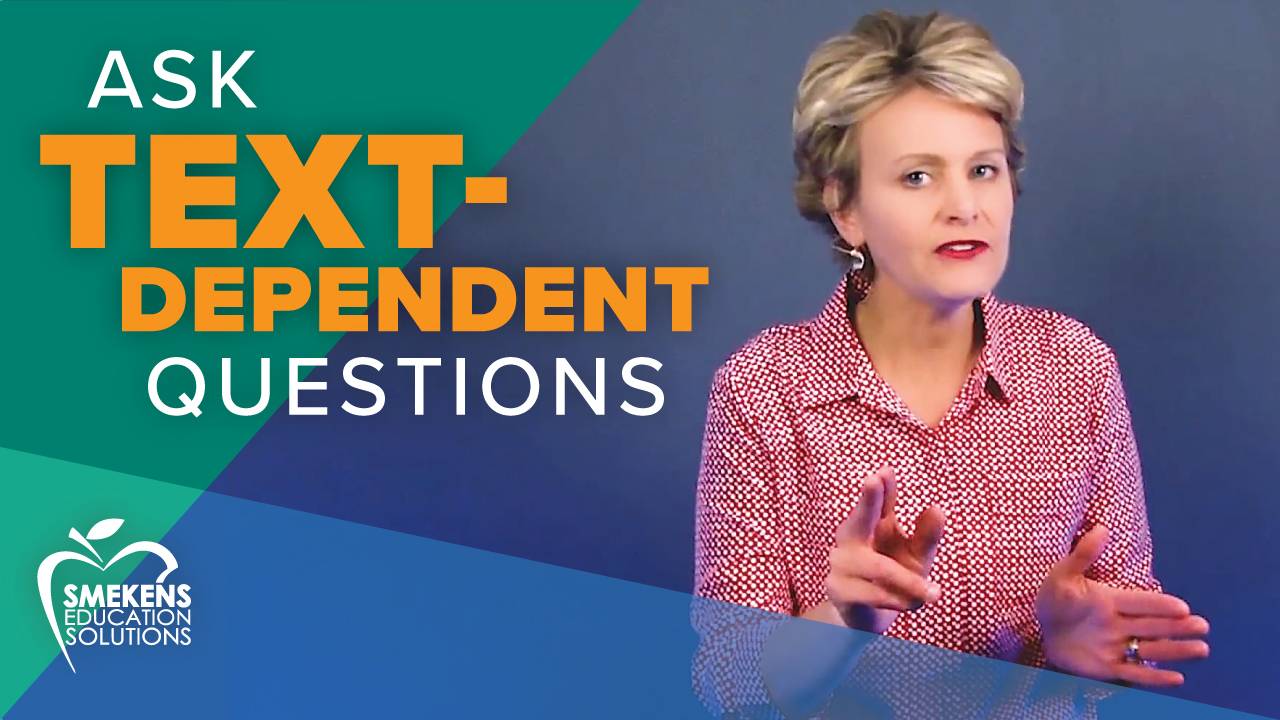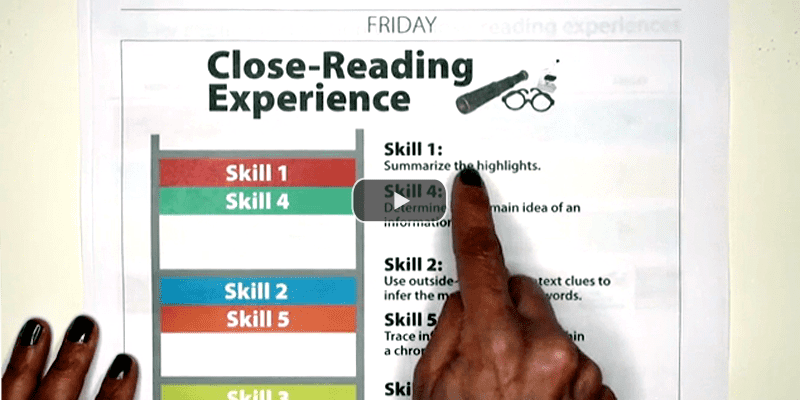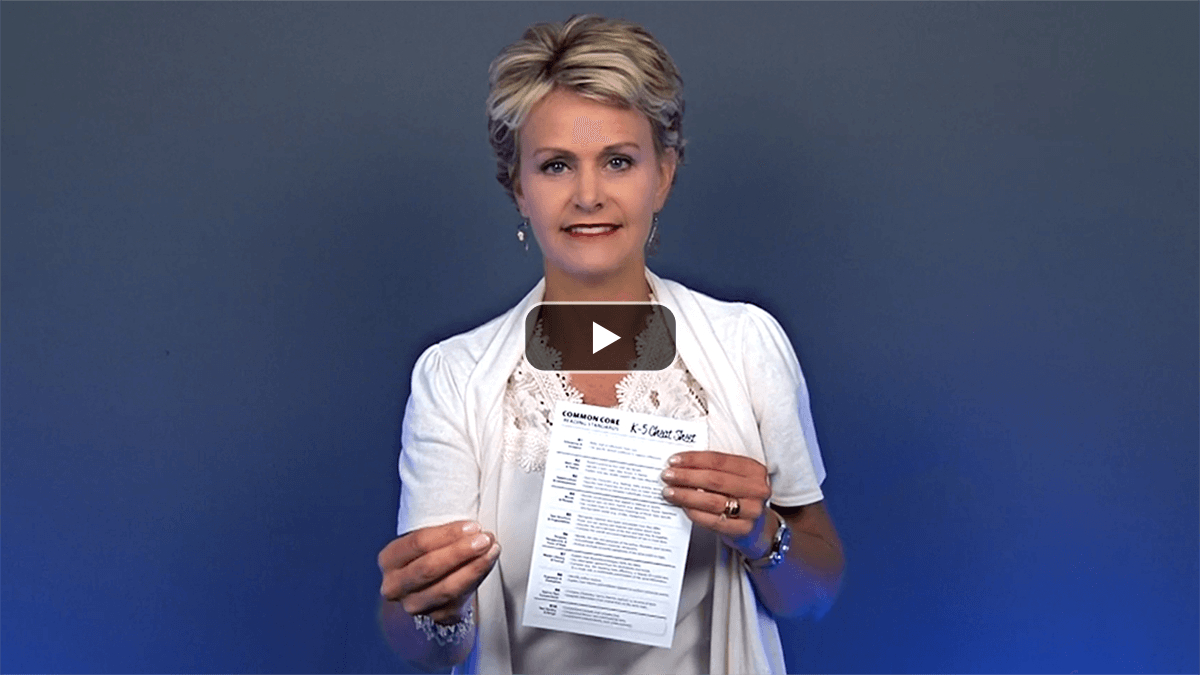Learning Center
reading
Identify the skill first & the text second
may 6, 2018
The reading standards outline the skills students need to master, but they do not require that certain texts be read in order to teach them. Likewise, state assessments measure a student’s mastery of reading skills; they do not assess if a student mastered specific texts read throughout the school year.
This puts the emphasis on teaching reading, not teaching texts. Teachers should first identify the comprehension skill to teach and then find the best text to support that instruction.
However, some curriculum puts the emphasis on which texts (e.g., novels, chapter books, passages, etc.) are to be read and in what order. When asked what they are teaching, educators often name a novel (e.g., We’re working on The Great Gatsby) or a subject (e.g., We’re reading about the Holocaust). However, neither of these reveals a particular reading comprehension strategy or focus.
It’s not that novels cannot or should not be read in the classroom. But choosing the book and then figuring out what can be taught from it—that’s backwards.
Plan for instruction
If instruction drives text selection, here are three simple steps to support the planning process.
- IDENTIFY THE SPECIFIC SKILL FOCUS. Determine a small, focused, “mini” skill that supports achieving a larger comprehension standard.
- PLAN THE EXPLICIT MINI-LESSON. Identify the important points to model within whole-class instruction.
- SELECT AUTHENTIC TEXT(S). Identify multiple texts/excerpts that will best support students’ learning and practice of the skill.
In the charts below, the three steps are applied in the planning of two different comprehension skills.
STEP 1: Identify the specific skill focus.
Broad Standard: Determine central ideas and themes of a text and analyze their development; summarize the key supporting details and ideas.
Specific Mini-Lesson Skill: Infer the theme of any text.
STEP 2: Plan the explicit mini-lesson.
Define what theme is, where theme is implied in stories, how readers put details together to infer the theme, etc.
STEP 3: Select authentic texts.
- Identify 5-6 short texts to read in their entireties over the next several days.
- Determine the themes of the first two as a whole-class, the next one in small-groups, and then a couple in pairs.
- After explicit instruction and lots of practice, gradually release students to infer theme independently with a new cold read.
STEP 1: Identify the specific skill focus.
Broad Standard: Interpret words and phrases as used in a text and analyze how specific word choices shape meaning or tone.
Specific Mini-Lesson Skill: Infer the author’s meaning behind a metaphor.
STEP 2: Plan the explicit instruction.
Identify the purpose of a metaphor, how to spot a metaphor, how to determine what is being compared, how to infer the author’s point, etc.
STEP 3: Select authentic texts.
- Identify a dozen short excerpts from earlier chapters in a novel for students to reread.
- In groups/pairs, students identify 5 metaphors, provide a literal comparison for each and their implied meanings.
- After explicit instruction and lots of practice, gradually release students to repeat the process for 5 more metaphors from within the same original excerpts.
Provide abundant practice
Although students could apply their understanding of theme within a novel study, it will take several weeks to finish the long text in order to practice the skill. And even then, it’s a single conversation about a single text’s theme. By reading several short texts, students have multiple opportunities to apply the thinking immediately.
Notice the use of “authentic texts” in both examples. Identify excerpts from the current novel that include numerous metaphors. This is better than assigning a worksheet of single-sentence metaphors. It’s easy to spot a metaphor when all the sentences on the worksheet include one. Whereas, in authentic texts, students have to reread several paragraphs, determine which statements include metaphors, and see their impact within the bigger context of the passage—they are inferring the power of metaphors in author’s messages.
For many, this shift in thinking is a major change. It requires teachers to acknowledge that simply reading texts and asking questions isn’t teaching reading. Comprehension improves when teachers deliver explicit instruction on how readers think and provide students with texts that allow them to repeatedly practice that thinking.




